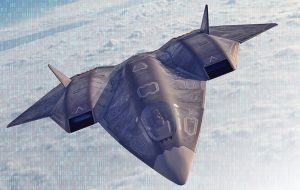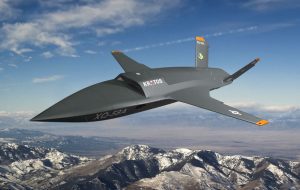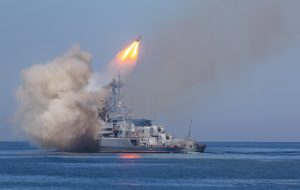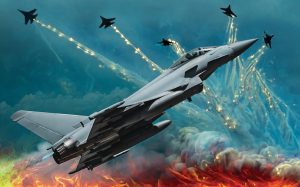Throughout military history, innovation has occupied a privileged position. Militaries have historically sought to find ways to incorporate weapons and new combat methods into their military operations to employ the element of surprise against the enemy and enhance the chances of victory. Moreover, historical experience reveals that the military institutions that sought to preserve their old practices without modernization were doomed to collapse and fail. Given the importance and role of innovation in increasing the effectiveness of military institutions, the concept and its main drivers, as well as its types and dimensions, will be discussed, with the most prominent examples from previous battles or new weapons systems.
First, military innovation definition
Innovation can be defined as one’s ability to introduce something new into existence, or generate new ideas that are valued by others, and it also includes presenting ideas or processes that already exist in a different way. In general, to be creative and innovative, one must go beyond the product or the underlying idea on which previous concepts or perspectives are based. The innovative product must also have a high intrinsic value due to its originality and uniqueness.
In the military field, there are many definitions of creativity, and one of the most common definitions of military innovation is that it is “a major change in the conduct of war that results in a significant increase in military effectiveness, which is reflected in the improvement of the results and performance of the army on the battlefield.” Innovation changes the way military functions are performed in the field, and increases military effectiveness. More specifically, innovation involves “developing new military techniques, tactics, strategies and structures” during the adaptation process in the face of how adversaries wage wars.

Stephen Rosen defines military innovation as “the change in the way in which a branch of the armed forces fights or the creation of a new branch. It also implies a change in practical concepts, that is, the ideas that govern how weapons are used to achieve military victory. In addition to the above, innovation implies change in the relationship of one service of the armed forces to another, or the abandonment of old concepts, and perhaps a weapon that was dominant in previous historical periods.
A study by the RAND Corporation defines military innovation as follows: “Military innovation manifests itself through the development of new war concepts and / or new means of integrating technology. New means of integrating technology may include doctrine, tactics, training, or support for a branch of the armed forces.”
Military theorists agree that military and technological innovations are not necessarily identical. Military innovation may use new or old technology, but in a unique way that effectively overcomes the opponent’s strategy. On the other hand, technological innovation can hinder military creativity. For example, the advent of the nuclear age led to the policy of “massive revenge” and the development of theories of warfare in the nuclear age, which effectively stagnated military creativity.
Based on the previous definitions, as well as the distinction between military creativity and technology, this study defines military innovation as a change at the level of doctrines, institutional organization, or technology that enhances the combat effectiveness of the armed forces.
He notes that there is a difference between military theorists’ points of view about the degree of change caused by military innovation, as some exaggerate it in some cases, so that they see that the security of military creativity requires a major change from past practices, in a way that renders the old methods of waging war useless and unfit for use or employment. According to this trend, military innovation requires a comprehensive change in military thought, and some even claim that it requires the innovation of a new branch in the armed forces. Supporters of this trend argue that innovation does not require the introduction of partial changes, but radical transformations, and that is why it should be called a “revolution in military affairs.”

On the other hand, some argue that military innovation should be based on partial modifications of existing military technology, tactics, and doctrines. In practice, both forms of change take place and the importance of partial innovations cannot be overlooked.
Second: Innovation drivers
An argument erupts among military theorists about the factors that drive military innovation. While some assert that technology stimulates military innovation, others assert that considerations and practical necessities in military battles are what drive military innovation forward. In fact, both factors represent a driver of military innovation. In times of armed conflicts, practical considerations play a role in military innovation, while in times of peace, technology plays a major role. In addition to these two factors, there are other factors that help military institutions adopt innovation, such as an external threat, lack of resources, or the presence of a state leadership that believes in the importance of change. All of this can be detailed as follows:
1
Technology in partnership with private sector: The United States is one of the countries most supportive of innovation in the military field, and is constantly keen on developing partnerships with major technology companies. A prime example is the US “Defense Innovation Initiative”, as the US Department of Defense is currently focusing mainly on technology acquisition in partnership with the private sector.
Its most prominent projects are the Defense Innovation Board, which works in partnership with Amazon owner Jeff Bezooz, and astrophysicist Neil DeGrasse Tyson, as well as the Experimental Defense Innovation Unit, whose mission is to develop relationships and enter into contracts with companies in Silicon Valley, which embraces the largest American technology companies. Therefore, scientists and engineers are seen as contributing directly to military innovation in peacetime.

2
Practical considerations on the battlefield: Military leaders, in times of war, are on the front lines of battlefields, and they are agents of innovation and change. Their presence there is for considerations related to survival, since there is no way to fully predict what an opponent, who uses dynamic and sophisticated methods, will do in an armed conflict, or what is known as “the fog of war”, there is a practical need to adapt and respond accordingly. This adaptation takes many forms, from seeking to acquire new weapons, to adopting new tactics, techniques and procedures.
These measures will not substitute for the need of military leaders who have the ability to find practical and new solutions to problems, that is, to be innovative and adaptable in rapidly-changing situations that may be confusing. Creative thought allows commanders to surprise their opponents, thereby thwarting their surprise tactics.
Therefore, some argue, that in war, as in art, rules cannot replace talent. Therefore, success in combat at all levels requires imagination on the part of leaders, who must possess a high degree of creativity in thinking and a willingness to take risks.
3
Joint Military Exercises: Peter Rosen confirms in his book “Winning the Next War”, how the US Navy and the Marine Corps conducted simulations of military battles during the period between the First and Second World Wars as a means of predicting the possible future needs of the army, and generating adequate support to military leaders to enable them to develop new military capabilities.
4
External threats: It is noted that the existence of a major external threat to the security of states stimulates in many historical cases military innovation. This was evident in both times of war and peace, as well as in cases where a country had recently suffered a defeat or military victory.
Examples of innovation in light of the external threat include the tactics of the German Storm Forces during World War I. Some soldiers in the German army were trained in the last years of the war to chase behind enemy lines and carry out sabotage operations against enemy trenches.
5
Internal considerations: Many military theorists believe that military innovation in many cases may be the result of directives from the leadership of the state, especially if it has a vision that believes in the importance of innovation and is keen on it. This is usually done in cooperation with military leaders who understand the importance of innovation.
Usually, there are factors inhibiting innovation within large institutions, including military institutions, as those in charge of them tend to resist any new practices that contradict the norms that have been followed within the organization over the years, even if the initial assessments indicate that its effects will be positively reflected on the overall performance of the organization. Therefore, the general rule is that innovation usually meets strong institutional opposition that discourages it, and the influence of this factor is only limited by the presence of a strong belief in the importance of innovation on the part of the state’s leadership.
On the other hand, some military literature believes that the incentives for innovation may be linked in some other cases to the existence of a struggle between the various main services of the armed forces over budget and resources, and may even be a product of a struggle over the distribution of resources within the same service. On the other hand, innovation usually has an institutional dimension, that is, it is linked to a change in the corporate culture in a way that encourages and stimulates innovation.
The US Department of Defense has made changes at the strategic level to accelerate innovation within the US military. Examples include the establishment of the “Under Secretary of Defense for Research and Engineering” office within the Office of the Secretary of Defense, “the establishment of the Future US Army Command”, and deployment of a new and ambitious strategy of Air Force science and technology. These changes are marked by a renewed focus on promoting disruptive innovations that can enhance the military capabilities of the U.S. military.
Third: incremental and radical innovation
Historians and sociologists have studied innovation theory since at least the 1940s, when economist Joseph Schumpeter introduced the concept of “creative destruction” in economics, and he meant “the industrial boom process that constantly revolutionizes the economic structure from within, by destroying the old structure and the creation of another new structure, and that this process is to be repeated in a continuous manner.”
Much of the literature since then has focused on innovations in the non-military fields. But since the 1990s, researchers began in earnest to construct a theory of military innovation. Great efforts have also been made to distinguish between the concept of innovation in peacetime and wartime, as well as between technological change and institutional change as potential sources of military innovation.

In 2004 a theoretical effort was made to try to link these ideas under a single concept of military innovation. Retired Marine Captain Terry Pierce, after studying the ideas of several other innovation theorists, proposed to create an overarching framework for military innovation that takes into account all of these ideas. The theoretical framework developed by innovation was classified according to four basic categories, each representing a type of innovation, but each with different approaches and implications. This can be detailed as follows:
1 
Incremental innovation: This type of innovation occurs when there are limited changes or improvements to the components of the current hardware or software, with the aim of making the existing things work better, provided keeping the knowledge about the interface of the system constant and unchanged. This category falls under, for example, the modernization of weapons systems. Incremental innovation is of great importance, given that the vast majority of improvements made in various militaries fall within this type. The army bureaucracy itself is also subject to incremental innovation, that is, adjustments to the way it operates and its institutional structures, which is beneficial for large organizations because it allows for their development, thus maintaining their continuity and effectiveness.
2
Stereotypical innovation: Stereotypical innovation occurs when technology changes, but the current principles governing the functioning of the system remain unchanged. An example is the shift from an analogue interface (that is, manual) to a digital interface (that is, an automated) for ship navigation. This means that stereotypical innovation introduces a new technology to accomplish the same old task. This happens repeatedly, but less frequently than incremental innovation. It is generally done by the same force of people in the Army Research and Development Corporation.

3
Radical innovation: it refers to the change in the components of the system, as well as the interface related to it. Examples include an aircraft carrier, tank, plane or submarine, they are all examples of combining new technology with new ways to produce something that did not exist before. Usually radical innovations are rare.
This is partly due to the fact that the limitations to radical innovation are strong, such as their need for a relatively long time to develop, in addition to the fact that they often require huge financial resources. Despite these challenges, major innovations were achieved by major R&D institutions in the military and the defense industrial base.
However, what should be understood about radical innovation is that it does not alter the prevailing grand perceptions of war. In other words, a new weapon is being developed in order to enhance the army’s ability to carry out its tasks. Aircraft carriers have been manufactured to support warships, and tanks to reinforce infantry and aircraft as forward observers.
It is noted that all three types of innovation that have been introduced so far, incremental, stereotypical and radical, are all innovations aimed at maintaining the sustainability of devices and systems. In other words, they are evolutionary steps and can also be considered small, medium and large innovations, respectively, in terms of their degree of complexity. For the military, sustainable innovations reinforce current methods of warfare.
4
Engineering innovation: This type of innovation occurs when the current technology is relied upon, but the relationships between components of the system are redrawn or reengineered, that is, when the current things are used in new ways. In military jargon, one could also call it doctrinal innovation. Among the architectural innovations is, for example, the combination of the use of aircraft carriers, fighters and radio communications, or tanks, aircraft and radios.
Architectural innovation often occurs in the wake of multiple stereotypical or radical developments that make it possible to link new components together. Architectural innovations can be sustainable, and most of them are, but in a few exceptional cases, they cause a new type of innovation: The (Disruptive Innovation).

Areas of military innovation:
Areas of military innovation can be classified as follows:
1
Innovation at the level of military doctrines: It is among the innovative military doctrines that have changed the course of many battles the concept of “blitzkrieg”, which the Germans developed and applied successfully at the beginning of World War II. And it was based on the use of air and ground reconnaissance to locate gaps in the enemy’s defenses, and then focus the forces on that area.
The second main element was to focus on the speed of transfer of forces, surprise, and take advantage of any opportunity that may loom during the course of the battles, by deploying fast-moving forces that penetrate deeply into the back lines of the enemy. The primary goal of this force is to destroy not enemy forces, but rather command centers and supply lines, and threaten withdrawal lines. The third key to success was the psychological impact of the fast-moving German forces. The blitzkrieg often caused the collapse of entire sectors of the forces fighting on the front even though tanks penetrated them from only one point.
The best test of military innovation is the achievement of surprise, by devising and subtly executing a highly innovative deception plan. Military commanders must put themselves in the shoes of the enemy and consider the least likely path to anticipate the enemy. Perhaps one of the historical examples of this is the October 1973 War, in which the Egyptian military planner succeeded in fully understanding the mentality of Israel, and thus was able to devise a very successful deception plan.
The Israeli military thinking was based on the fact that the Egyptian forces would not launch an attack on their Israeli counterpart unless Egypt was able to acquire newer fighters that would enable them to strike in the Israeli rear, and that the Egyptian forces were in a weak position, and that the Syrian forces were in a worse situation. In fact, Tel Aviv ruled out that Egypt and Syria would launch a joint military attack against it. Therefore, when Egypt and Syria launched a joint offensive on October 6 and managed to neutralize the elements of Israeli superiority, this was a strategic surprise and a major military failure to Israel.
In this context also comes the success of the Egyptian forces in the October War in 1973 in eliminating one of the established military concepts, which is “mobile defense”, which the Israelis relied on, and is based on the expectation of Egyptian forces’ attack from one direction, and then directing the entire force of the Israeli reserve to destroy the Egyptian forces that succeeded in crossing the Suez Canal and penetrating the Bar Lev Line from one side. To bypass that, the Egyptian forces penetrated the Israeli defenses along the entire front line, which confused the calculations of the Israeli forces, and put them in trouble because of the inability to determine where to direct the reserve thrust.
And then the Egyptian forces succeeded in proving the failure of the mobile defense system, which was adopted by the Western military doctrine, and which was in effect in all NATO countries, and therefore the US Department of Defense began to amend the mobile defense idea in the Western doctrine, to come out to the world, in 1976, with a new military doctrine known as the “Active Defense”, which divides the reserves in depth into several reserves to counter the multiple breaches along the front line, and to be adopted by all NATO member states after that.
The United States developed a new term in the early nineties of the twentieth century, “revolution in military affairs,” which reflected a major shift in American military doctrine, as it relied on combining precision air strikes, along with gathering intelligence on the opponent’s army through different intelligence tools, and finally “command and control”. The practical application of this revolution was in the Iraq war in 1991, and the United States continued to apply the same doctrine in the following wars, most notably Afghanistan war in 2002, and the war against Iraq in 2003.
This military doctrine prevailed for years until a hostile doctrine appeared, which was also characterized by innovation, and replaced it, namely “hybrid wars”, which is the new generation of warfare, adopted by the Russian General Staff Command, which can be defined as “hidden or deniable activities” which are supported by conventional or nuclear forces that aim to influence the internal politics of the target countries, meaning that this kind of warfare includes among its goals in the end influencing the people and their perceptions.
This new military doctrine uses a mixture of different tactics, which includes the use of conventional forces to support or protect irregular forces. Russia is accused of employing these tactics in both Ukraine and Georgia. In the Ukrainian crisis in particular, Russia used guerrilla warfare to support separatists in the east of the country, but eventually it had to use conventional forces to support irregular tactics to ensure that the separatist movement was not defeated by Ukrainian forces in August 2014.

2
Innovation through employment of weapons: It is noted that Israel and the Arab armies used more than 12,300 tanks and armored vehicles during the October 1973 war. About 2,600 of them were destroyed within less than 3 weeks. Despite this, the Egyptian forces did not destroy most of the Israeli tanks by relying on tanks, but instead used “Malutka” guided missiles and grenade launchers “RPG-7” to destroy the Israeli tanks. This tactic achieved great success, as one Egyptian soldier destroyed 23 tanks and 3 armored vehicles.
3
Institutional Innovation: This is represented in establishing new military units in response to new threats or potential opportunities that are expected to arise in the course of military battles. Among the examples of this is China’s attempt to employ artificial intelligence for military purposes, as Chinese military planners believe that artificial intelligence will surpass firepower, machine power and information power on battlefields, and that intelligence will be the decisive factor in determining the outcome of the battle.

In light of this situation, the Chinese Liberation Army developed new theories and concepts of what it called “intelligentised operations”, which are based on cooperation between man and machine. The concept of “human-machine hybrid intelligence” was introduced. Chinese military theorists believe that the nature of war is undergoing a shift from network-centric warfare to “algorithm-centric warfare”, which will include the use of smart swarm warfare and cognitive control warfare. In light of the previous situation, the Chinese People’s Liberation Army is not only interested in developing weapon systems that support artificial intelligence, but also focusing on making use of artificial intelligence in command and control, with the consequent changes in the command and control structure in the Chinese army.
Among other institutional innovations is the United States’ tendency to establish space forces, in response to the development of both Russia and China space capabilities that Washington suspects that they will ultimately lead to the possession of offensive space military capabilities, in addition to Washington’s desire to maintain a technological superiority in the field of space beyond the two countries.
4
Innovation at the level of developing new weapons: In this context comes the development of radar to detect attacking fighters. For the first time, in World War I, armies searched for ways to provide early warning as enemy fighters approached, guide friendly fighters to intercept them, and even direct anti-aircraft artillery fire to destroy the opponent’s fighters. In 1918, the US Army began to search for different approaches to develop radars. These efforts continued over two decades, during which different methods were tried.
There were two basic methods for detecting distant objects, the first method: unidirectional methods based on capturing some form of energy emitted from the target. The second method, in two directions, or back and forth. The techniques used in this second method included emitting a form of energy and collecting what is reflected by the object being tracked. The focus at the beginning was on the first method, that is, on unidirectional systems, because they seemed to be simpler and more practical. The types of energy released by the fighter were evaluated to be infrared, heat to sound and radio waves.
The program took an important step forward in 1926 when Major William R. Blair became the officer in charge of the Research and Engineering Division of the Signal Corps, US Army. Blair played a key role in decommissioning audio frequencies and focusing signal device resources on thermal emissions and radio frequencies. In 1930, Blair became director of Signal Labs, a new entity established at the time.
The US Navy first succeeded in the possible use of reflected radio waves as a method for detecting fighters in the 1930s. By coincidence, marine scientists found that passing aircraft created a remarkable interference with the signals transmitted from the tests. The project nonetheless faced enormous technical difficulties that were not overcome until 1936. The Signal Device Laboratories developed new antennas, each smaller and better than its predecessor. The transmitting antennas improve and focus the signal they transmit, while the receiving antennas are becoming more sensitive in capturing the faint return signals. After several trials, the device entered service in 1939, and was named “SCR-268”.

Among the new innovations is the Israeli Iron Dome system, which launches a missile at the intended target, but without directly hitting it, as the system’s missile explodes near the target object, and the system has the ability to intercept a batch of missiles and drones simultaneously, according to Israeli officials. Given the capabilities of this system, the United States contracted to purchase it.
Among the new weapons, which left clear repercussions on military operations, is the development of unmanned vehicles, which are remotely piloted. And many countries of the world expanded the production of drones and employing them in launching attacks. The use of these types of aircraft was mainly limited to the United States of America, which used them to launch attacks against terrorist groups. But then, other countries began to have drones, and expanded in them to the point that the major advanced countries produce drones.
The development of unmanned systems is not limited to fighters, but also extended to the innovation of drones that supply various types of drones with fuel, as the US military seeks to acquire small-sized units of drones by 2022, which can surpass their peers in terms of their combat capabilities. It is also able to fly long distances and work for 72 hours without stopping.

The Norwegian company “Brooks Dynamics” has developed a small-sized drone called “Black Hornet Nano”, intended for reconnaissance, with a length of 6 inches, and a weight of less than an ounce, which makes it difficult to reconnoiter, and it can fly for more than a mile and for a period of up to 25 minutes. It is also equipped with three cameras to give soldiers a comprehensive view while they are safe in hiding, and to provide them with real-time intelligence.
In conclusion, it is clear from the previous presentation that innovation was a companion of military history, and contributed greatly to enhancing the effectiveness of the armed forces, and played a decisive role in the course of battles. With the development of the civil technology sector, and the awareness of many country leaders of the importance of innovation, it is expected that military institutions will invest part of their resources to enhance innovation, whether in partnership with the private sector, or independently.
Sources and references
لواء دكتور: سمير فرج، حرب أكتوبر 73 من وجهة نظر مركز الدراسات الاستراتيجية، صدى العرب، 7 أكتوبر 2020، https://bit.ly/2R6oOe9
كيف تقوم منظومة القبة الحديدية الإسرائيلية باعتراض الصواريخ؟، سي إن إن عربي، يوليو 2014، https://cnn.it/3cLaqAf
أندرو رادن، الحرب الهجينة في منطقة البلطيق: التهديدات والاستجابات المحتلمة، راند، 2017، ص ص 5 – 6.
معركة الدبابات في سيناء: جندي واحد يدمر 23 دبابة، سبوتنيك، 9 أكتوبر 2019، https://bit.ly/3wr711s
Milan Vegi, On Military Creativity, Joint Forces Quarterly, 70, 3rd quarter 2013, p. 83.
Michael Mcnerney (2005) Military innovation during war: Paradox or paradigm?, Defense & Security Analysis, 21:2, p. 202.
Ibid., p. 202.
Michael C. Horowitz, What Is A Military Innovation and Why It Matters, October 9, 2020, https://bit.ly/39IA1I6
Daniel M. Gerstein, The Military’s Search for Innovation, The Rand Blog, August 13, 2018, https://bit.ly/2QRWnAh
Nina Kollars, Genius and Mastery in Military Innovation, Survival, 59: 2, 2017, p. 125.
Milan Vegi, op.cit., p. 88.
Michael Mcnerney, op.cit., p. 205.
Tor Bukkvoll, (2015) Military Innovation Under Authoritarian Government – the Case of Russian Special Operations Forces, Journal of Strategic Studies, 38:5, pp. 614 – 615.
George M. Dougherty, Accelerating Military Innovation Lessons from China and Israel, Joint Forces Quarterly, 98, 3rd Quarter, 2020, pp. 10 – 11.
Barry Scott, Naluahi Kaahaaina and Christopher Stock, Innovation in the Military, Small Wars Journal, October 2, 2019, https://bit.ly/3rGTGOE
Milan Vegi, op.cit., pp. 87 – 88.
Anthony Cordesman, The Real Revolution in Military Affairs, CSIS, August 5, 2014, https://bit.ly/3cRZWzc
Elsa B Kania (2019) Chinese Military Innovation in the AI Revolution, The RUSI Journal, 164:5-6, 26-34, pp. 28 – 29.
Wendy Rejan, Radar, in; Jon T. Hoffman (ed.), A History of INNOVATION U.S. Army Adaptation in War and Peace, (Washington; CENTER OF MILITARY HISTORY, 2009), pp. 17 – 18.
Ibid., pp. 20 – 23.
US Army demonstrates autonomous resupply with UAVs at recent AEWE, Jane’s International Defence Review, April 2021.
Prox Dynamics, https://bit.ly/39FeSP9













